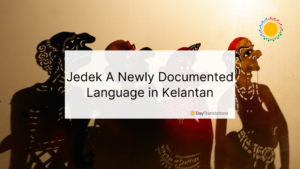Welcome back, avid linguists, to The Language Classroom! In this week’s installment, we venture into the captivating world of whistled languages. These unique forms of communication, found in various cultures around the world, are not just linguistic marvels but also cultural treasures. Join us as we unravel the secrets of these languages, revealing the extraordinary adaptability and creativity of human language.
The Basics of Whistled Languages
Whistled languages are a form of communication where people use whistling to emulate spoken language. This linguistic phenomenon, found in various cultures around the world, often in regions with challenging terrains such as mountains or dense forests, demonstrates its practicality where long-distance communication is essential. The whistle can carry further than a shout and can be used to communicate over several kilometers.
Origins and Distribution
Whistled languages have been documented in many parts of the world, including the Canary Islands (Silbo Gomero), Turkey (Kuşköy), Mexico (Mazateco), and Greece (Antia on the island of Euboea). Each of these regions has developed its own unique whistled language, tailored to the local spoken language’s specific phonetic and structural characteristics.
Silbo Gomero: The Canary Islands’ Whistled Wonder
One of the most renowned examples of a whistled language is Silbo Gomero, practiced on the island of La Gomera in the Canary Islands. This language, which mimics the sounds of spoken Spanish, is not just a linguistic curiosity but a cultural treasure. Recognized by UNESCO as a Masterpiece of the Oral and Intangible Heritage of Humanity in 2009, Silbo Gomero’s preservation efforts highlight its cultural significance and the community’s dedication to its heritage.
How Whistled Languages Work
Whistled languages transform the phonetic elements of spoken language into whistles. The pitch, duration, and intensity of the whistles correspond to the vowels and consonants of the spoken language. This method of communication requires a high level of skill and practice to master, as it relies on the whistler’s ability to reproduce the tonal variations and rhythms of speech accurately.
Adaptation to Local Phonetics
Each whistled language adapts to the phonetic and grammatical structure of the spoken language it represents. For instance, Silbo Gomero simplifies Spanish phonemes into distinct whistle patterns, while Kuşköy whistlers adapt the Turkish language’s vowel harmony and agglutinative structure into their whistles.
The Social and Cultural Role
Whistled languages often hold significant cultural value within their communities. They are not only practical tools for communication but also symbols of cultural identity and heritage. In some regions, the use of whistled language is taught in schools and celebrated through local festivals, ensuring that this unique linguistic tradition is passed down through generations.
Educational Efforts and Preservation
Efforts to preserve and promote whistled languages have led to their inclusion in educational curricula in some areas. For example, Silbo Gomero is taught in schools on La Gomera, ensuring that young generations learn and appreciate this remarkable form of communication. These initiatives play a crucial role in maintaining the linguistic diversity and cultural richness of these communities.
Challenges and Threats
Despite their cultural significance, whistled languages face numerous challenges. Modernization and the spread of digital communication tools have reduced the necessity for traditional long-distance communication methods. Additionally, the migration of younger generations to urban areas often leads to a decline in the use of whistled languages.
Efforts to Revitalize Whistled Languages
To counter these threats, various revitalization efforts have been initiated. These include documentation projects, cultural programs, and academic research aimed at preserving and promoting whistled languages. The integration of these languages into modern technology, such as mobile applications and online platforms, also offers new avenues for their survival and growth.
Wrapping Up
Whistled languages are a testament to the ingenuity and adaptability of human communication. They offer unique insights into the relationship between language and environment, and their preservation is crucial for maintaining the world’s linguistic and cultural diversity.
Thank you for joining us on this exploration of the linguistic wonders of whistled languages. We hope you found this journey as fascinating as we did. Be sure to check back in next week for another exciting installment of The Language Classroom!












Sorry, the comment form is closed at this time.